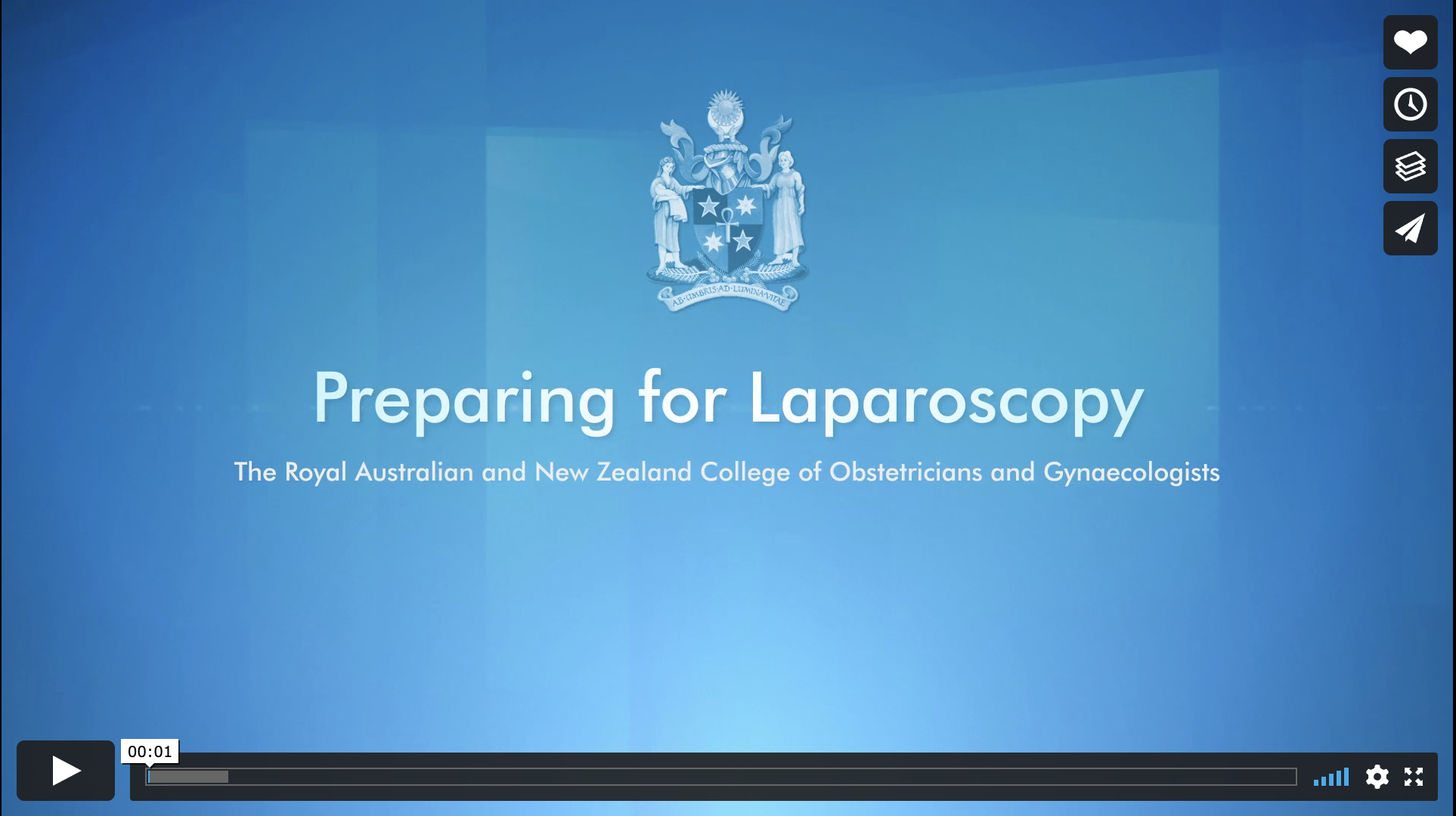Laparoscopy
Fig. 1 - LaparoscopyLaparoscopy (fig. 1) is a surgical procedure where a 5mm or 10mm camera is inserted through an incision in the belly button. The incision can be made to be invisible after healing. Smaller 5mm incisions are often made lower in the abdomen to allow passage of surgical instruments.
RANZCOG Laparoscopy information
Laparoscopic Excision of Endometriosis
Endometriosis is a common yet debilitating condition affecting up to 10% of reproductive age women. In New Zealand this will affect up to 120,000 women. The disease occurs when the glandular lining of your uterus migrates and grows elsewhere in the pelvis. This can include growth around your vagina and cervix, your bowel, bladder, and muscles/ ligaments. Symptoms and signs of endometriosis include
Painful periods
Pelvic pain at any time during the month not necessarily related to periods
Pain during sex
Pain with a full bowel or during bowel motions
Pain when passing urine
Infertility (no pregnancy after 12 months of trying)
Fatigue in the presence of any of the above symptoms
Laparoscopy remains the “gold standard” test for diagnosis of endometriosis. The correct removal of endometriosis can improve symptoms and, in many cases, improve both natural conception and success at IVF. Endometriosis is often ranked in severity from stage 1 (minimal) to stage 4 (severe). Severe endometriosis often contains deep endometriosis deposits which grow to a depth of more than 5mm and often favour the bowel and ligaments of your pelvis. These can only be removed by a surgeon trained in advanced endoscopic surgery. To avoid multiple laparoscopies, we recommend suspected endometriosis be performed by an advanced endoscopic surgeon.
Laparoscopic (keyhole) Hysterectomy
Hysterectomy involves surgical removal of the uterus and/or cervix. Laparoscopic hysterectomy results in less blood loss and a faster return to normal activities when compared with open abdominal surgery (ref 2-4). We counsel women undergoing hysterectomy to also consider removal of both fallopian tubes at the same time to reduce future cancer risk from an abnormal tube. This is in line with Australasian guidelines. Ovaries are not removed at hysterectomy if women are under the age of 65 years unless they are known to be abnormal.
Hysterectomy is commonly offered
When women have completed their family
When medication is not managing heavy menstrual bleeding or pain.
Can also be performed in conjunction with prolapse surgery.
Laparoscopic ovarian cystectomy and/or oophorectomy
Ovarian cysts can cause pain or abdominal discomfort. While most are benign some can turn cancerous. We often advise cyst removal laparoscopically when patients are symptomatic, or a cyst is persistent. Oopherectomy (removal of ovary) is often discussed in women who are postmenopausal with ovarian cysts as their risk profile for cancer is higher.
Laparoscopic Tubal Sterilisation/ Salpingectomy
Blocking of both fallopian tubes or removal of tubes is one of the most effective methods for permanent contraception. This procedure can be performed as a day procedure with 1-2 5mm port incisions on the lower abdomen.
Laparoscopic Myomectomy
When fibroids grow within the wall of the uterus or on the outside of the uterus they cannot be removed by hysteroscopy. Laparoscopic myomectomy is a good option for women with abnormal uterine bleeding or pressure symptoms from fibroids (can include urinary urgency) who wish to keep their uterus. Some evidence suggests fibroids within the wall of the uterus can still contribute to infertility and miscarriage which warrants removal.
Laparoscopic Pelvic floor repair
(Uterosacral ligament plication, mesh sacrocolpopexy)
Laparoscopic pelvic floor repair involves supporting the top of the vagina to natural ligaments in the pelvis if women are experiencing severe prolapse. We have both non-mesh and mesh options to consider, and our team are happy to provide extensive counselling about the options.
Laparoscopic Burch Colposuspension
Colposuspension involves stitches to help support the end of your urethra, where your urine drains. A combination of childbirth and low oestrogen can make the end of the urethra extra mobile, leading to leakage of urine with activities such as coughing, sneezing and jumping. This procedure is a non-mesh approach to fixing incontinence and has high success rates with minimal side effects. Our team is happy to meet with you to discuss the procedure in more detail.



